In the Nepali chapter 7, Madhav Prasad Ghimire presents a captivating portrayal of Nepal’s landscapes. As he delves into the depths of the poem, the beauty of the Himalayas and the serenity of the Ukali River unfold before us. The verses vividly depict scenes where Anjuli sips from the Ukali, Suseli echoes through the village, and Lal, Odi, and Nini ponder their journey’s end.
Exercise of Nepali Chapter 7
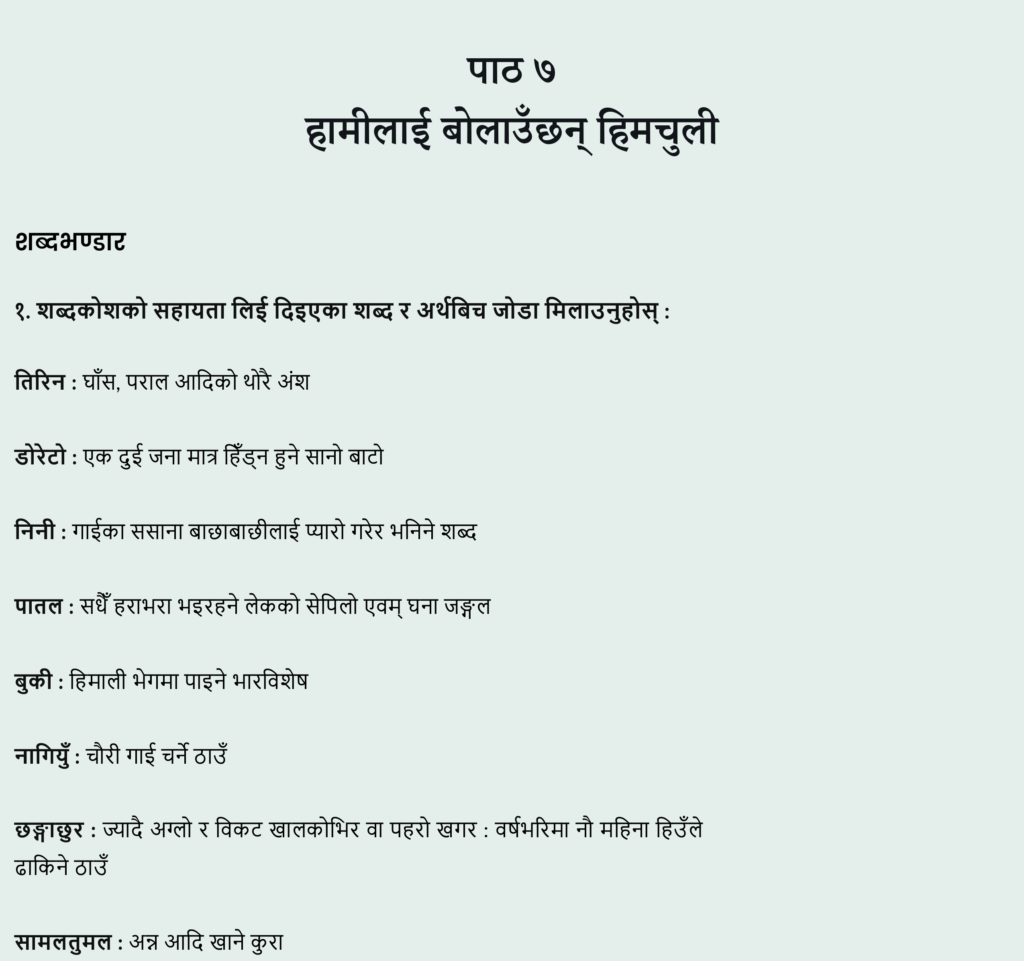
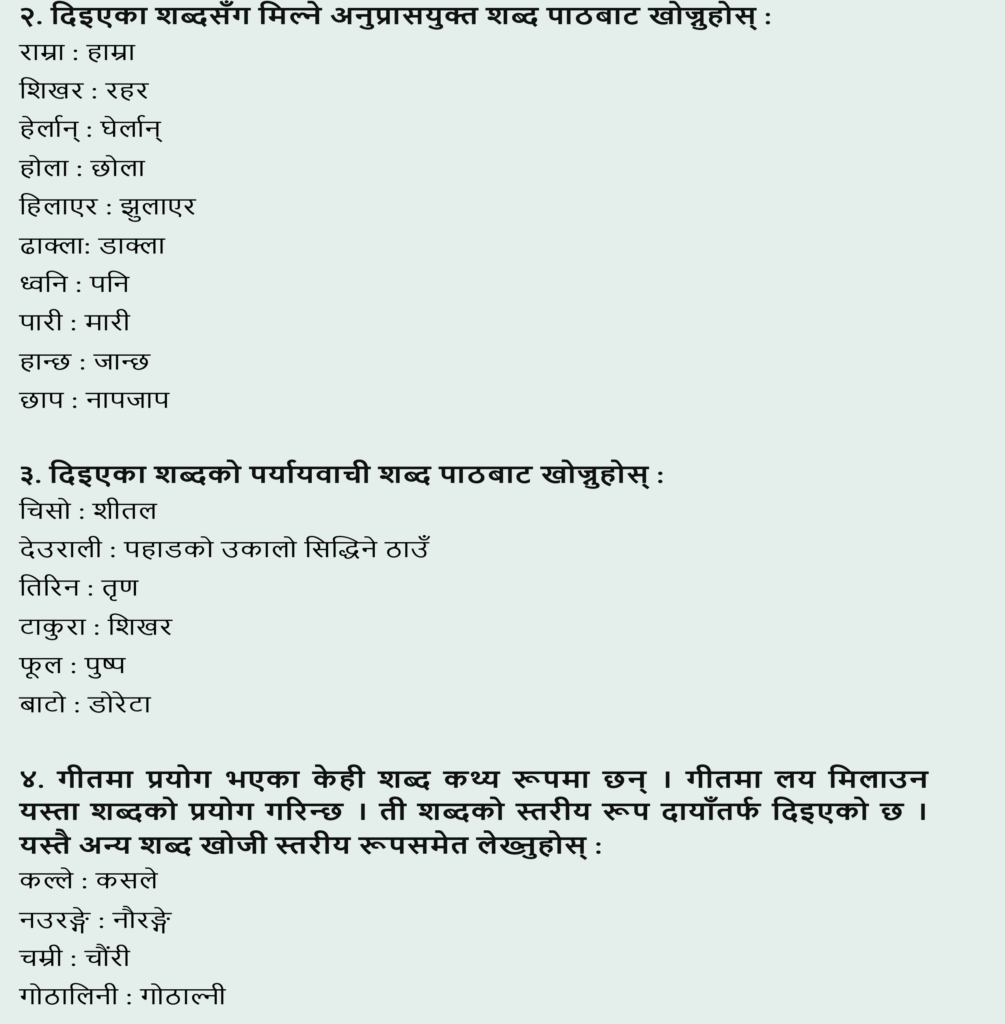
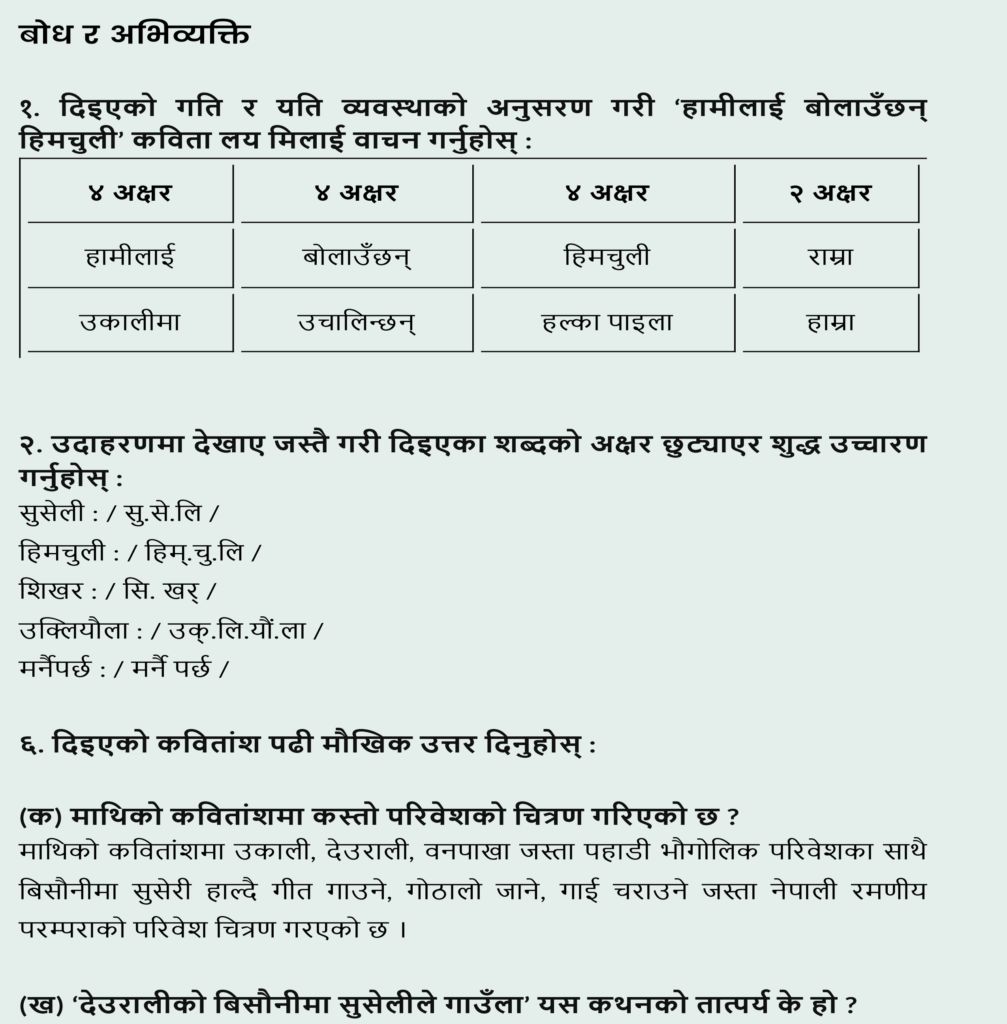
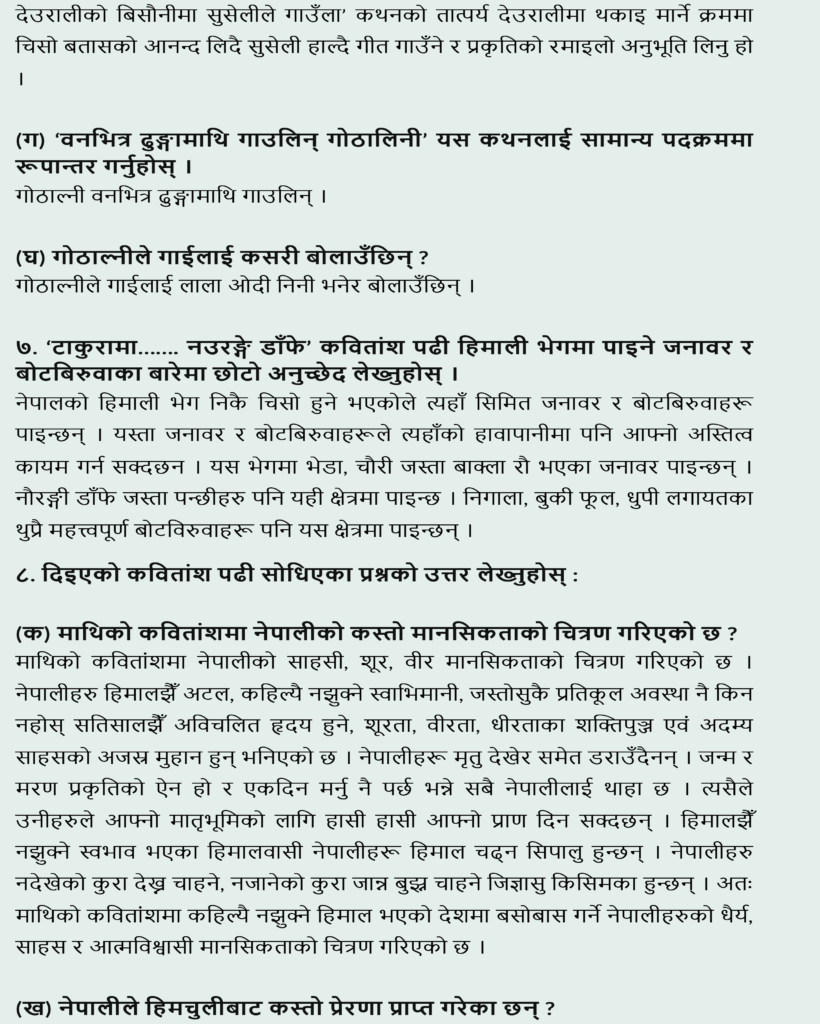
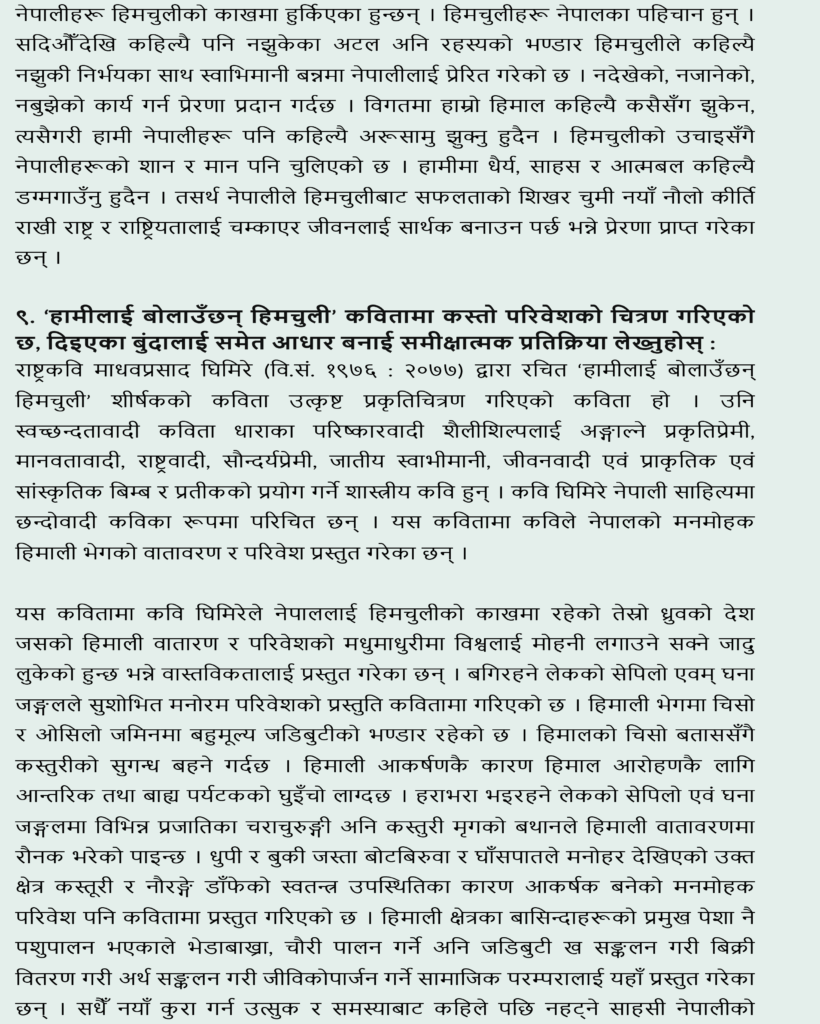
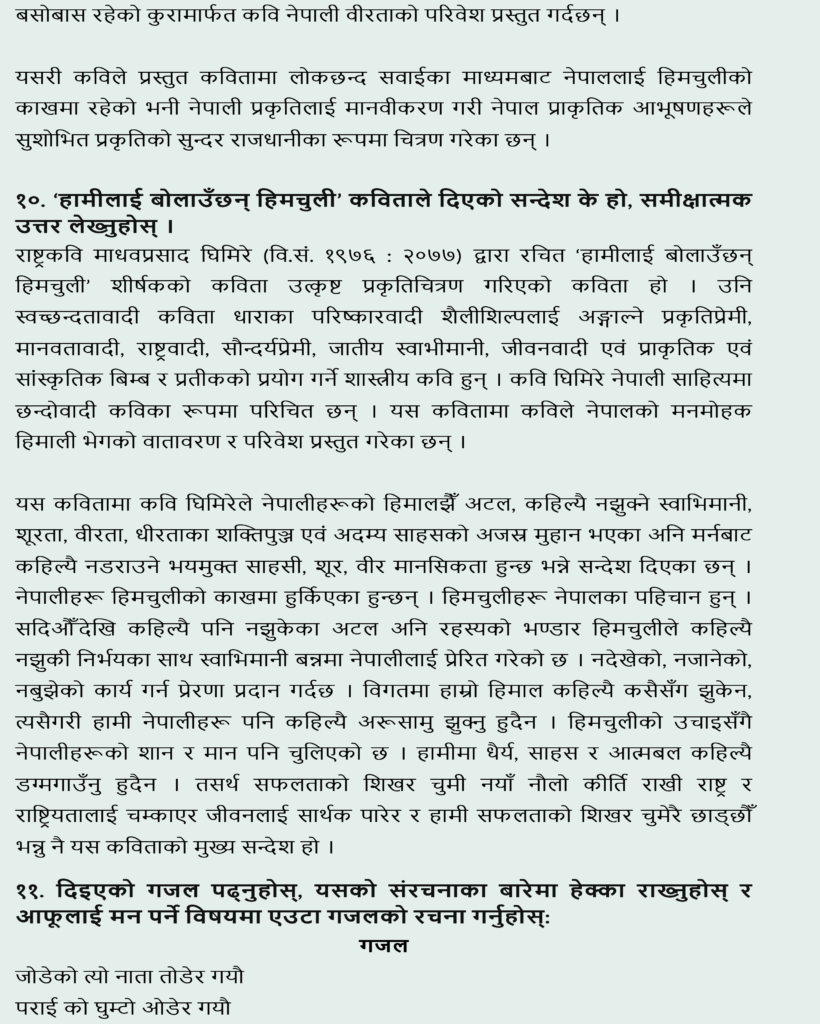
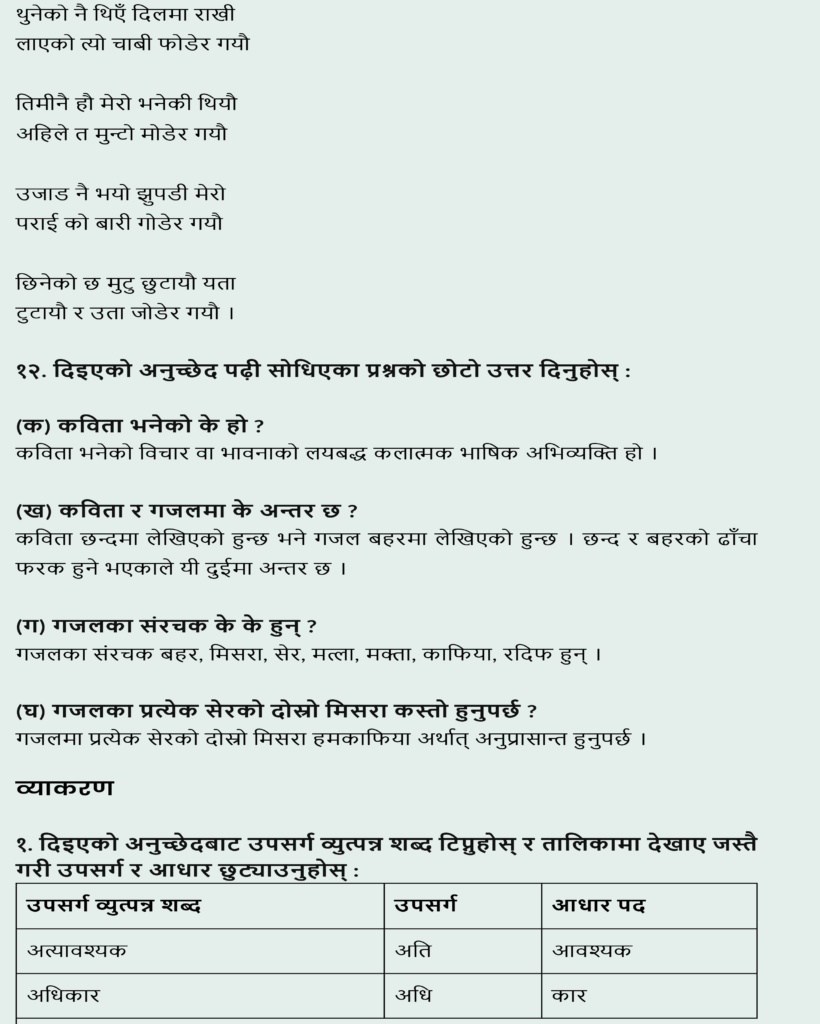
Byakaran of Hamilai Bolauchan Himchuli
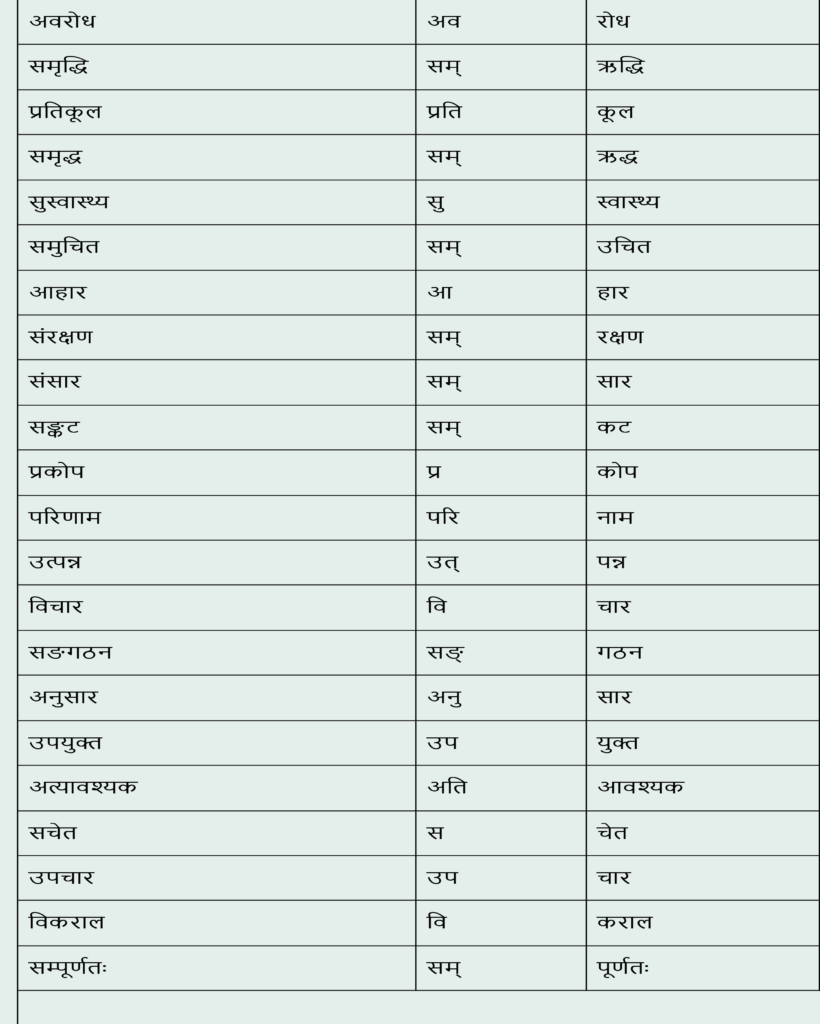
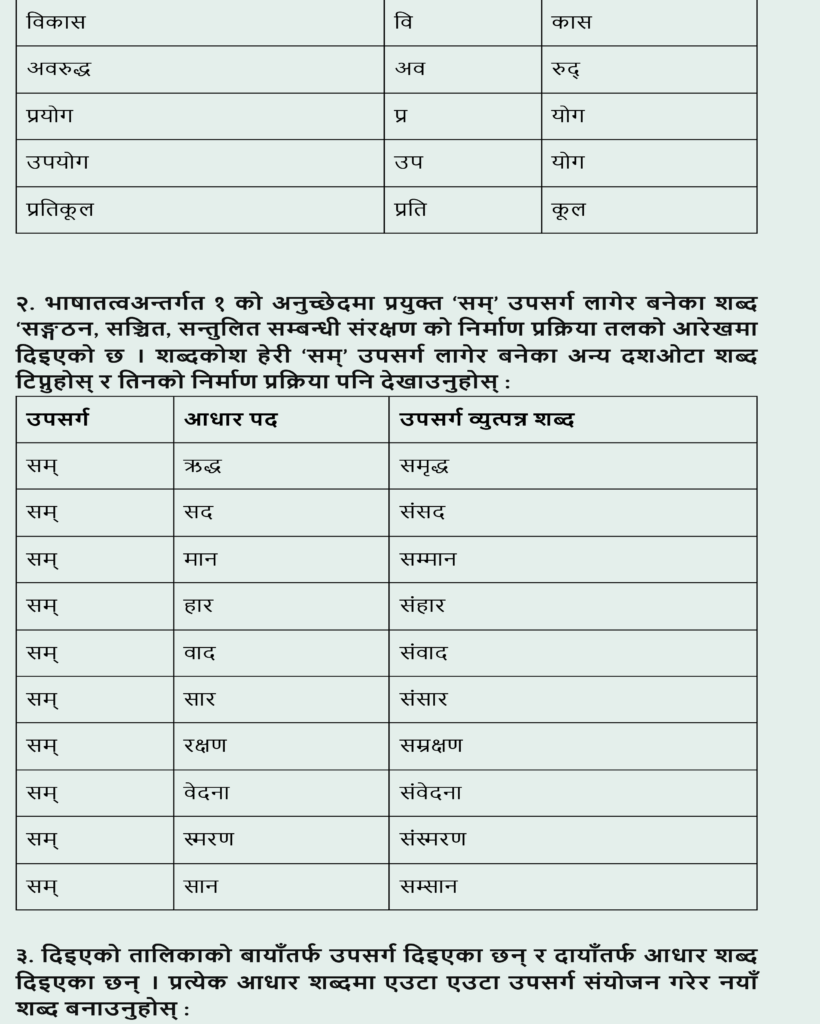
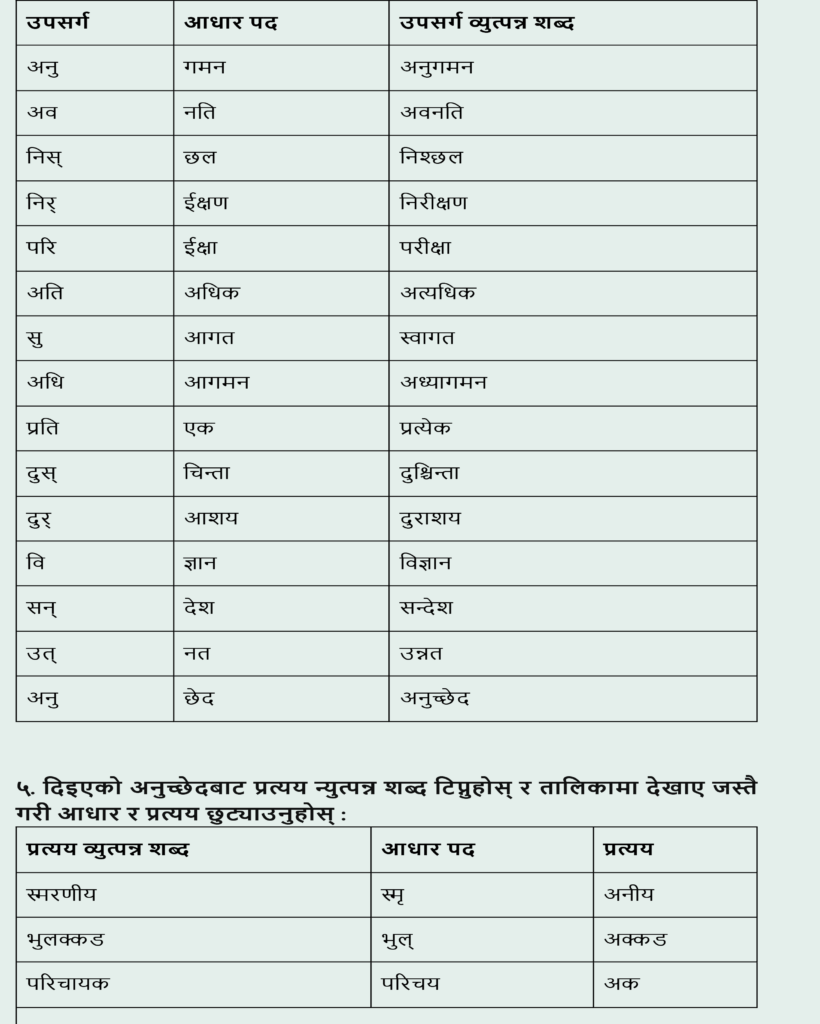
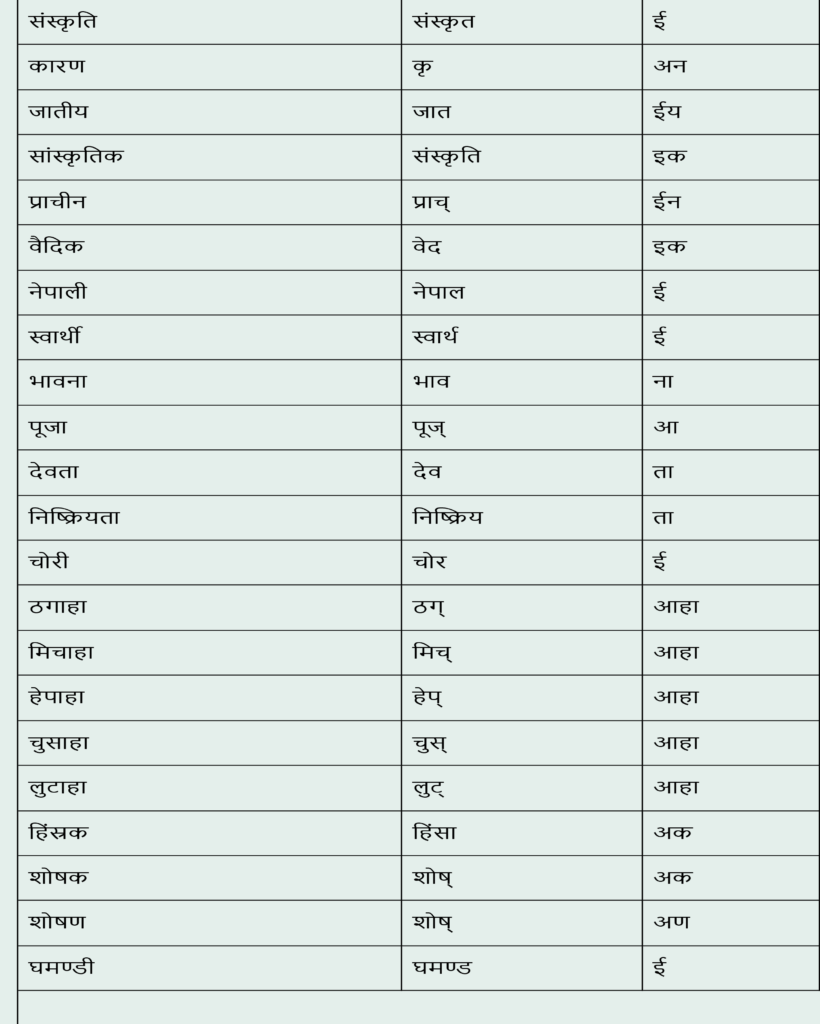
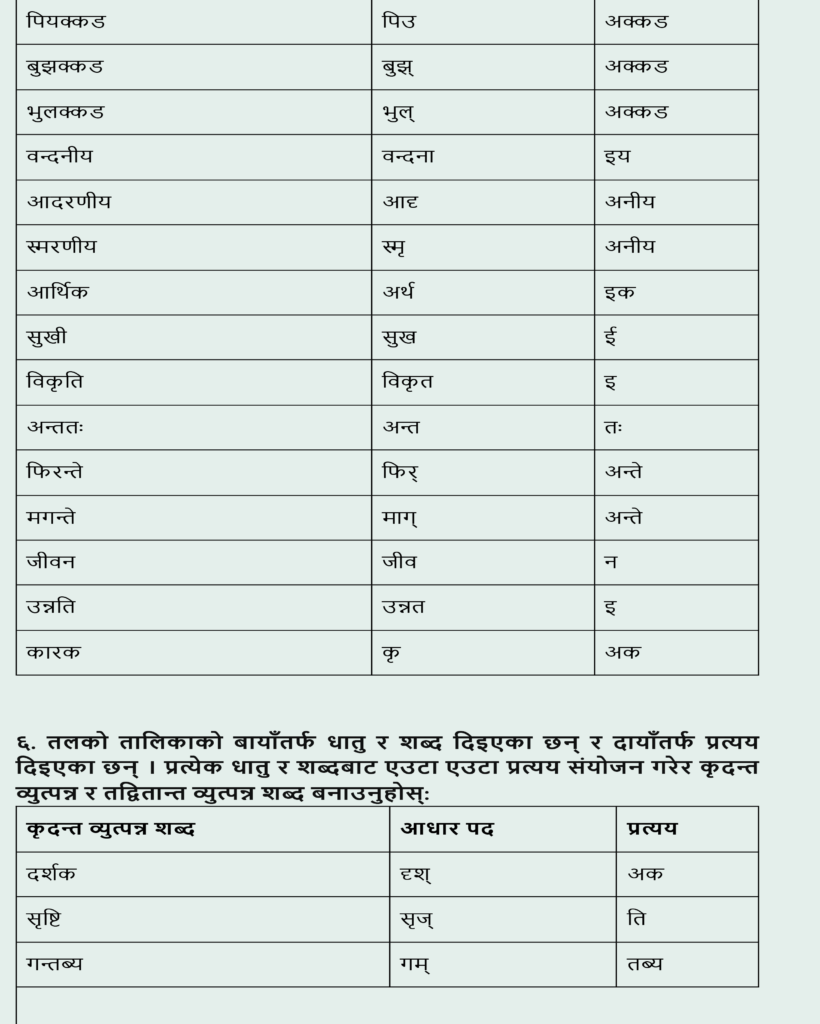
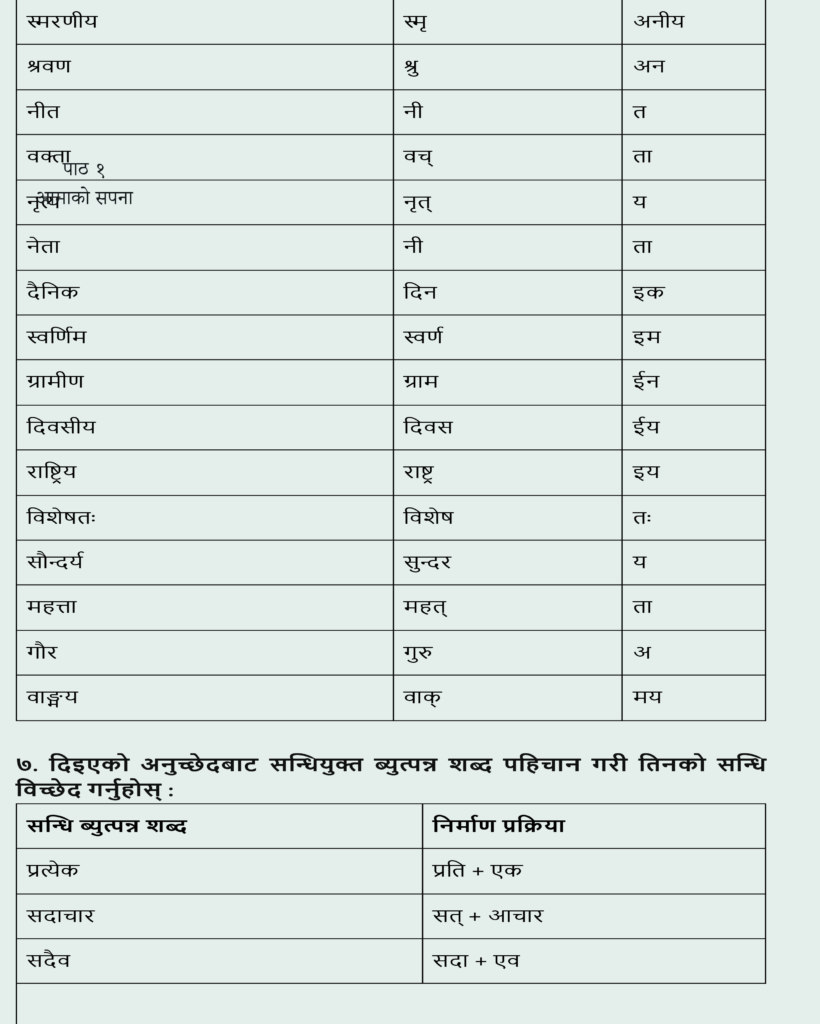
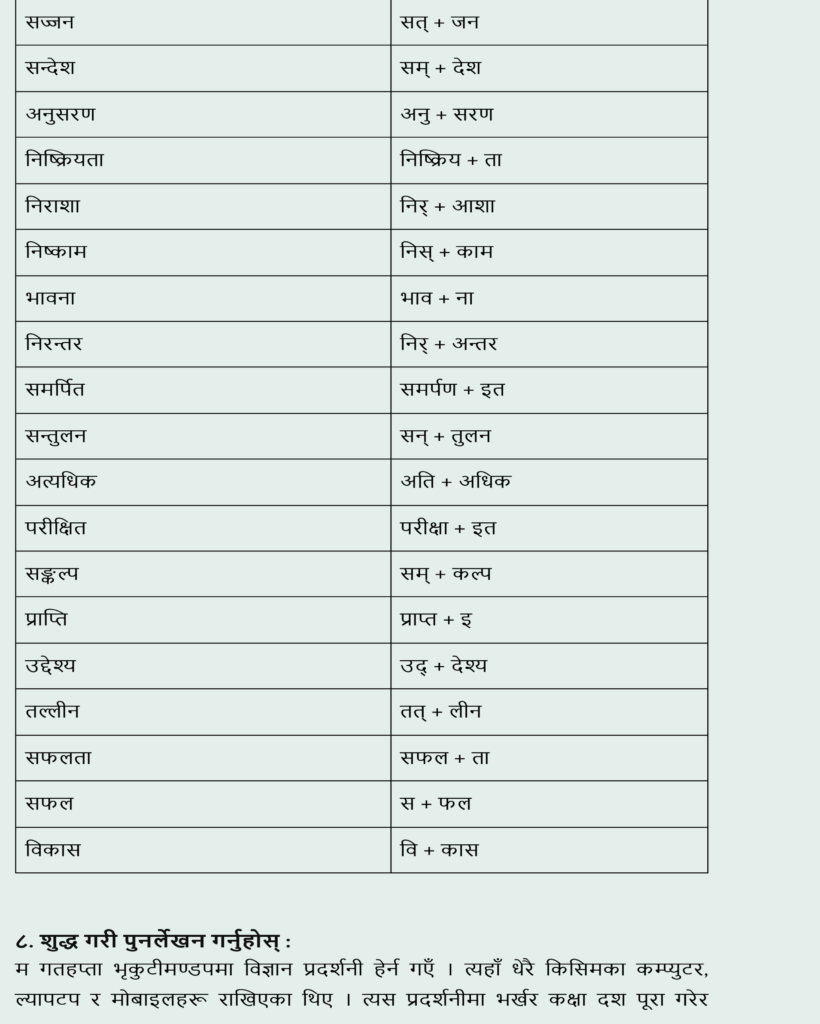

Summary of Nepali Chapter 7 “Hamilai Bolauchan Himchuli”
The poem “Hamilai Bolauchan Himchuli” by the national poet Madhav Prasad Ghimire (B.S. 1976-2077) splendidly represents Nepal’s natural splendour. Ghimire, renowned for his elegant and refined style, skillfully weaves together themes of nature, humanity, nationalism, and cultural identity, making him a stalwart figure in Nepali literature, particularly in Nepali chapter 7 of the textbook.
In this masterpiece, Ghimire paints Nepal as the world’s third pole, with its Himalayan charm captivating all who encounter it. Through his verses, he transports readers to the lush landscapes and dense forests of Bagiraha, where the rich biodiversity and rare botanical treasures create a mesmerizing atmosphere. The scent of musk mingles with the mountain breeze, enhancing the region’s allure, while colourful birds like the Danphe add vibrancy to the scenery.
Furthermore, Ghimire illuminates the socio-economic dynamics of the Himalayan region, where activities like animal husbandry, sheep farming, and medicinal herb collection play crucial roles in sustaining livelihoods. He also celebrates the indomitable spirit of the Nepali people, who bravely face new challenges while remaining deeply rooted in their cultural heritage, echoing the essence of Nepali chapter 7.
Ghimire humanizes Nepal’s natural beauty through his poetic lens, presenting it as a radiant capital adorned with nature’s finest jewels. His portrayal of Nepal’s heroic presence amidst the Himalayas underscores the nation’s resilience and cultural richness, symbolising natural beauty and bravery.
Moral of Nepali Chapter 7 “Hamilai Bolauchan Himchuli”
The poem “Hamilai Bolauchan Himchuli” by Madhav Prasad Ghimire echoes a resounding message of resilience, courage, and national pride, as depicted in Nepali chapter 7 of the textbook. Ghimire’s eloquent verses vividly portray the Himalayas as a symbol of unwavering fortitude, reflecting the indomitable spirit inherent in Nepali identity.
Throughout the poem, Ghimire repeatedly invokes the towering presence of the Himalayas, urging Nepali people to emulate its steadfastness and courage. Just as the majestic peaks of Himchuli stand tall against the elements, so should Nepalis uphold their pride and integrity in the face of adversity.
In “Hamilai Bolauchan Himchuli,” Ghimire underscores the significance of embracing one’s cultural heritage and national identity with pride and confidence, a theme highlighted in Nepali chapter 7. The Himalayas, referred to as Himchuli, serve as a powerful metaphor for the resilience and strength ingrained in Nepali culture, inspiring its people to persevere through challenges and triumph against all odds.
Moreover, Ghimire’s poignant verses serve as a rallying cry for Nepali people to draw strength from their cultural roots and national pride, a sentiment emphasized in Nepali chapter 7. By repeatedly invoking Himchuli, the poet instils a reverence for the Himalayas and all they represent, encouraging his audience to uphold the values enshrined in their heritage.
About the Poet
Madhav Prasad Ghimire, often hailed as the national poet of Nepal, stands as a luminary figure in Nepali literature, as depicted in Nepali chapter 7 of literary studies. Revered for his poetic mastery and cultural stewardship, Ghimire’s verses resonate with themes of resilience, courage, and national pride. Through intricate metaphors and eloquent prose, he illuminates the Himalayan landscape, infusing it with the spirit of Nepali nationalism. Ghimire’s works serve as a timeless ode to Nepal’s rich cultural heritage, inspiring generations to cherish their roots and embrace their identity amidst the challenges of modernity.
FAQ of Nepali Chapter 7 Hamilai Bolauchan Himchuli
What is the central theme of the poem “Hamilai Bolauchan Himchuli”?
The poem’s central theme is resilience, courage, and national pride, inspired by the majestic Himalayas.
How does Madhav Prasad Ghimire use the Himalayas as a metaphor in the poem?
Ghimire portrays the Himalayas, referred to as Himchuli, as a symbol of unwavering grit and resilience, urging Nepali people to emulate its steadfastness and courage.
What message does the poet convey through the repeated invocation of Himchuli?
Through the repeated mention of Himchuli, Ghimire emphasizes the importance of embracing one’s cultural heritage and national identity with pride and confidence, encouraging Nepalis to draw strength from their roots.
How does the poem reflect the spirit of Nepali nationalism?
The poem reflects the spirit of Nepali nationalism by highlighting the resilience and strength ingrained in Nepali culture, as depicted through the metaphor of the Himalayas.
In what ways does Ghimire’s poem resonate with the content discussed in Nepali chapter 7 of the textbook?
Ghimire’s poem resonates with the content discussed in Nepali Chapter 7 by emphasizing the themes of cultural heritage, national identity, and the importance of unity and resilience in overcoming challenges, all of which are central to the chapter.
Where can we find the PDF of the book of Class 12 Nepali?
You can download the class 12 Nepali guide from the Ministry of Education, Science and Technology website.
How many Chapters are there in the Class 12 Nepali book?
There are a total of 12 chapters in the class 12 Nepali book. You can find the exercise of each chapter on the elearningwithguru website.

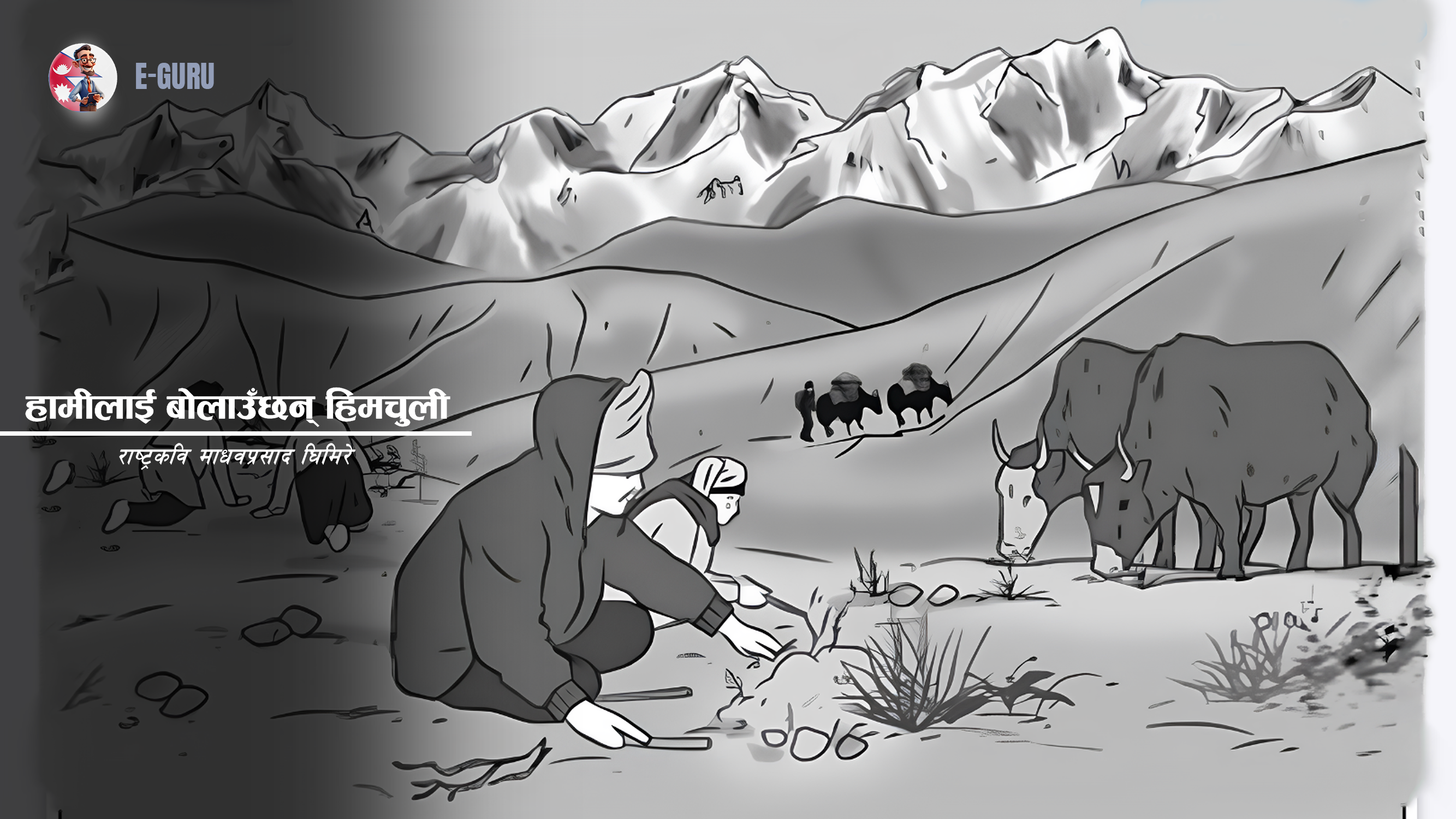
Leave a Reply